By Maxine Carter-Lome
One hundred years is the age when items officially become antiques, and sometimes more valuable as a collectible. As we ring in 2019, we look back on a few well known products, brands, and companies who turn 100 this year but have been collectible and part of our popular culture for decades.
Fanny Farmer
Canadian businessman Frank O’Connor opened the first Fanny Farmer candy store in 1919 on East Main Street in downtown Rochester, New York. O’Connor had started the Laura Secord Candy Shops in Toronto six years earlier before venturing into the U.S. with a different name. He named his new company in honor of culinary expert Fannie Farmer, who had died four years earlier; she had nothing to do with the candy stores, and her recipes were not being used. He altered the spelling of the first name to avoid confusion; however, as a marketing device he benefited from the association and all that her name implied.
Fanny Farmer Candy Shops’ identifiable brand of a silhouetted cameo and script typeface was ubiquitous throughout a good chunk of the United States for much of the 20th century. During its heyday, Fanny Farmer was the largest manufacturing retailer of candy in the country with more than 400 shops. During the Depression when other candy retailers were going out of business, the company slashed retail prices and sales climbed 150 percent!
Collectibles include promotional linen postcards, candy tins and boxes, specialty gift items, advertisements, figurines, and more.
Pop-up Toaster
While General Electric built the first electric toaster for the home in 1909, it was 10 years later, 1919, when Minnesota mechanic Charles Strite created an easy-to-use timed pop-up toaster, designed for and marketed to restaurants. The incorporated timer shut off the heating element and released a pop-up spring when the slice of toast was done.
The stylized, compact nickel-plated unit reflected the American trend toward shiny simplicity. The brand’s row of horizontal vents on the sides suggested speed (a common modernist motif), while the toaster’s top slid into an almost aerodynamic curve that led the eye to the two black control levers (one for the current, one for the timer). There were no unnecessary adornments outside, and no skimping on materials inside. Despite a retail price of $12.50 at a time when flip-flop models cost $2.00, the svelte, sturdy Toastmaster was a runaway success. The company’s unusual sales force-ladies who carried a loaf of bread under one arm, the toaster under the other-and ease-of-use advertising (“Set It and Forget It!”) convinced America that the automatic toaster was indispensable, relegating previous models to pantry shelves and today, to shelves at flea markets.
Today, collectors focus on generations of the electric toaster to showcase its evolution, and focus on specific brands and models. A good resource to learn more is the Toast Collectors Association, found on Facebook at @ElectricBreakfast.
Junior Achievement
Junior Achievement was founded in 1919 in Springfield, Massachusetts with the intent to help teens moving from rural America to the industrial cities with the skills needed to be successful adults.
For its first 25 years, JA operated primarily in the Northeastern United States and in a few cities in the Midwest, but by its 50th Anniversary JA programs were being offered in all 50 States. Today, Junior Achievement programs reach nearly 5 million students in the U.S. alone with the support of nearly a quarter-million volunteers, primarily from the business community. The organization has also broadened its mission by bringing its after-school programs for teens into elementary and middle school classrooms during school hours to foster work-readiness, entrepreneurship, and financial literacy skills at the earliest ages.
Collectors can find a rich trove of Junior Achievement collectibles on the market, from one hundred years of achievement and service award pins to advertisements, banners, fundraising sale items, and trade fair ephemera, among other items. Junior Achievement alumni include Mark Cuban, comedian Amy Sedaris, former U.S. Secretary of Health and Human Services Donna Shalala, Subway restaurant founder Fred DeLuca, journalist Dan Rather, and AOL founder Steve Case.
Although the technology dates back to 1896 with a patent issued to John and Charles Erickson and A.E. Keith for a rotary dial telephone, and earlier versions of a direct dial phone and network were in use in rural parts around the country by local operators, it wasn’t until 1919 when MA Bell rolled out its new network and the Model 50AL Candlestick free-standing dial telephone that the era of rotary dial telephones was officially launched.
Over the successive decades, the design of the rotary dial telephone morphed to become more user-friendly. It was, however, the Model 500, introduced in 1949, that went on to become the iconic standard of the Bell telephone for well over a generation, and the most widely produced dial telephone ever.
The “Princess Phone,” introduced in 1959, broke the mold. Its small size, color options, and lighted dial were designed to make it attractive as a bedside extension, and the Bell System marketed it as such. It also unleashed a design revolution in telephone manufacturing that was only fueled by the AT&T Divestiture which opened the market to competition for telephone handsets from manufacturers other than those produced for AT&T.
The era of the rotary dial phone came to an end in 1950 when AT&T ran a series of trials which proved that push-button dialing was roughly twice as efficient as rotary dialing. This led to the company releasing an electronic pushbutton system known as ‘Touch-Tone’ to its customers in 1963, which quickly gained popularity thanks to its speed – both at the user end and at the network end.
Today, collectors focus on early generations of AT&T model phones for their history and design evolution, as well as vintage models and iconic designs that capture the aesthetics of eras gone by.
A&W Root Beer
On June 20, 1919, Roy W. Allen opened a roadside root beer stand in Lodi, California using a formula he had purchased from a pharmacist. The very first A&W Root Beer was served during a homecoming parade for WWI vets. In 1922, Allen partnered with Frank Wright. They combined their initials to create the brand “A&W” and inspired a restaurant chain, founded in 1922. Today, A&W Root Beer is the world’s number one selling root beer.
In 1924, Allen bought Wright’s share, obtained a trademark, and began selling restaurant franchises. A&W was one of the first franchised restaurant chains in the United States. Franchise owners could use the A&W name and logo and purchased concentrated root beer syrup from Allen. By 1933, the creamy beverage was such a success that there were more than 170 A&W franchised outlets operating in the Midwest and west. By 1960, the number of A&W restaurants swelled to more than 2,000!
Originally, a mug of A&W Root Beer sold for five cents and was only offered in frosted mugs within its restaurants but in the late 1960s, widespread demand pushed A&W to look at its distribution and in 1971 the company began offering its soda in bottles and cans in stores outside of its restaurants.
A&W is known for their collector mugs, and throughout the 2000s wooed collectors by randomly selling secret special-edition mugs. They’ll design a new one most years, and throw in one-of-a-kind editions on occasion. Other collectibles include signs, restaurant menus, advertising, tree ornaments, A&W plushy bears, and other branded souvenirs and packaging.
Eight O’Clock Coffee
In 1919, the Great Atlantic & Pacific Tea Company (A&P), established as Gilman & Company in 1859, conducted a survey asking people what time of day they drank coffee most. The majority of those surveyed reported that they typically drank coffee at 8 a.m. and 8 p.m. Based on this data, A&P branded its signature whole bean coffee, “Eight O’Clock.” By the 1930s, Eight O’Clock coffee had gained over a quarter of the U.S. market share and was the most popular brand coffee in the United States. Its spectacular billboard in Times Square-a giant 25-foot-tall Eight O’Clock Coffee that gave off real steam-forever cementing its place in American popular culture.
A&P, however, did not fare as well and in 1979 licensed its branding division, Compass Foods, Inc., to sell Eight O’Clock Coffee to other retailers including competing supermarket chains, thereby growing the brand while A&P fell into decline and closed stores. In 2006, the brand was sold to Tata Global Beverage. Today, it is the 5th largest coffee brand in the U.S., in terms of volume, and has the highest loyalty and repeat rates among bagged coffee competitors.
Collectible items include coffee tins, promotional coffee tin banks, advertising and branded specialty items.
Hostess CupCake
The first Hostess CupCake was sold on May 11, 1919, the first commercially produced cupcake, originally produced by the Taggart Bakery as the Chocolate CupCake. Originally, two CupCakes were sold for five cents. Different flavors were offered during the early years, including CupCakes topped with vanilla or malted milk flavored icing. During the 1940s, an orange flavored cupcake was developed, with orange cake and icing. But until 1950, the Hostess CupCake did not have the signature filling or the white squiggly line across the top that millions of people today associate with the brand and product.
Hostess CupCakes were marketed for a time by the animated character of Captain CupCake, who was a companion in commercials to Twinkie the Kid and Fruit Pie the Magician. One marketing slogan that was used was “You get a big delight in every bite.” Numerous commercials featured the slogan “Hey! Where’s the cream filling?”
Hostess was the snack brand for generations of Americans, with the CupCake, in all its iterations, one of the company’s biggest sellers. In 1988, 400 million Hostess CupCakes were sold, growing to 600 million by 2011; however, their popularity was not enough to save the company from filing for bankruptcy protection in 2012. It was the acquisition of Hostess by Apollo Global Management in 2013 that saved this beloved snack cake from certain extinction, broadening its appeal by introducing new flavors and “Limited Time Only” and “Seasonal” products; a dog whistle for collectors.

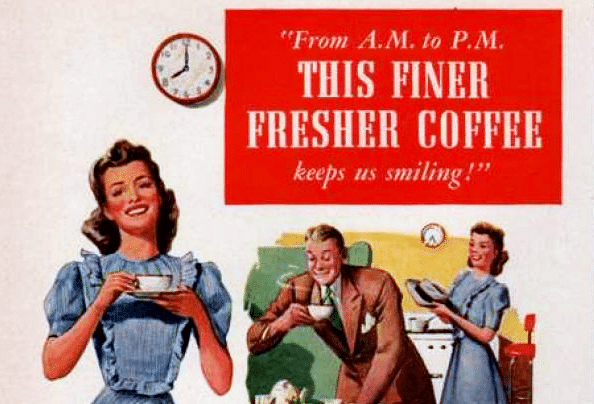
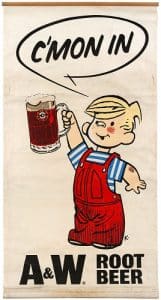
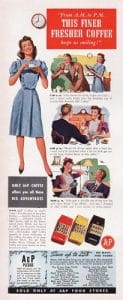

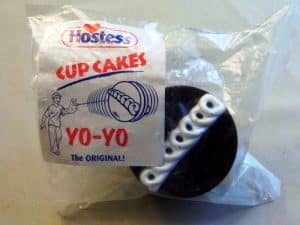
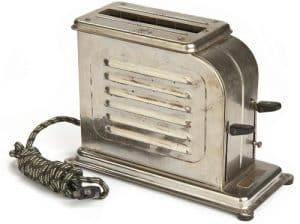
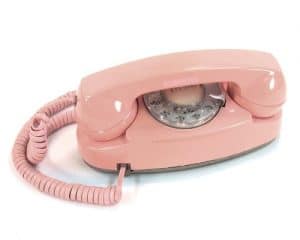





Related posts: